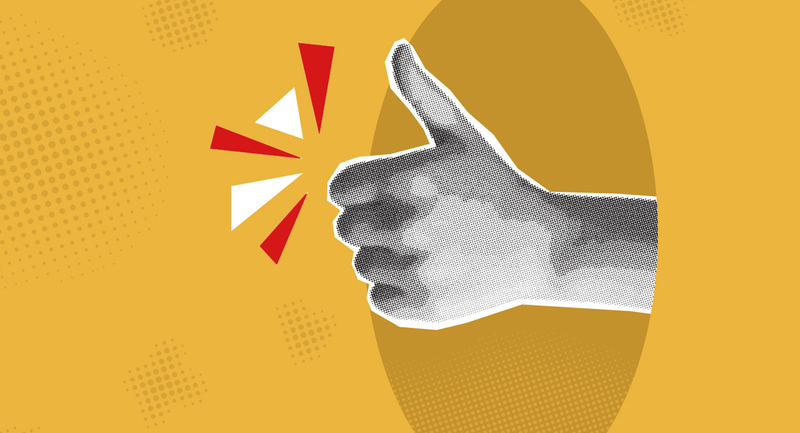Four years ago, when the staff of Sawyer Elementary School in Ames, Iowa, decided they needed to improve students' writing, they took some very deliberate steps. First, they surveyed and interviewed students about their writing. Then they gathered samples of student writing and developed a rubric for scoring them. By comparing their rubric to writing scales from UCLA, they found that teachers at Sawyer were "grammar and mechanics happy," says Harry Heiligenthal, the school's principal.
Using a revised rubric, 20 teachers rated writing samples from three of their students (of varying abilities) each month. Meanwhile, teachers received on-going staff development, including lots of demonstration and coaching, on how to help students craft their writing. As a result, teachers began devoting more instructional time to topics such as how to open and close a piece of writing, how to provide focus, and how to use supporting details. Not surprisingly, the staff at Sawyer saw improvement over time in the writing samples they collected.
Today, teachers at Sawyer are scrutinizing students' problem solving in mathematics, Heiligenthal says. They have gathered data on how well students can restate problems and on how adept students are at selecting strategies to solve problems. Teachers have also identified a need to hone their own questioning skills. In studying the teaching and learning of mathematics at their school, the Sawyer staff are following the same process that helped them improve students' writing abilities.
This process is known as "action research." Simply put, action research is "studying whatever you're doing" through disciplined inquiry, explains education consultant Emily Calhoun, author of the ASCD book How to Use Action Research in the Self-Renewing School. The goal is to take action to improve one's own practice, based on the deeper understanding that relevant data can provide.
Action research is conducted by educators themselves to inform their own practice, says Richard Sagor, an associate professor of education at Washington State University and author of the ASCD book How to Conduct Collaborative Action Research. Thus it contrasts with traditional education research, where teachers are studied by "outsiders."
Action research takes something teachers do all the time—gather information on how well their practices are working—and makes it "a little more formal," Calhoun says. Rather than just taking mental notes, teachers record useful data and then analyze them closely. The teacher is the key player in the research process, which can last a week or stretch over several years.
Action research can work on three levels, experts say. An individual teacher may examine something in his or her own classroom. A group of teachers may collaborate in researching a shared interest. Or an entire school might research an issue together.
A Five-Step Process
According to Sagor, action research follows five steps, which may overlap:
1. Problem formulation. At the outset, educators reflect on what students are doing—or not doing—that troubles them. The focus of concern might be weak reading skills or poor study habits, for example. The action researchers identify what they know and don't know about the issue and the variables that affect it. Then they pose a research question to uncover what they need to know to verify and address the problem. For example, a teacher who is concerned about differentiating instruction in her nongraded class might ask, "Am I devoting enough time to individual children at the right developmental level?"
In choosing an area to research, educators should focus on student learning, Calhoun advises. This focus requires them to scrutinize the learning environment, including curriculum and instruction. "We have almost a habit of looking at things that are distant from the learner and instruction," such as parents and the community, she says. Instead, educators should look most directly at what they have control over: the nature of instruction.
2. Data collection. Next, educators gather data they believe will shed light on the issue they want to examine. They can use data that already exist—statistics available from the central office, for example. They can also capture fresh data by using tests, surveys, and interviews. Other potential sources include student work (portfolios), logs and journals, videos, "shadowing," checklists and rating scales, and archival evidence.
Sagor strongly recommends that educators gather data from at least three sources—a technique called "triangulation"—to ensure a valid picture of reality. A single source of data may be imprecise or biased, he says, but if multiple sources agree, educators can be much more confident of the data's validity.
Action researchers may gather quantitative data—hard numbers, such as test scores or attendance records—or qualitative data, which is more descriptive and includes people's perceptions. Most often, educators use "mixed methods" by gathering both kinds of data, Sagor says. For example, a teacher might gather quantitative data (from pre- and post-tests) on whether his students are benefiting academically from cooperative learning, and qualitative data (from a survey) on how they feel about working in groups.
Start by collecting data on student and teacher behaviors, Calhoun suggests—the data that are "closest" to your area of concern. "If you're interested in how students are writing, you can't collect data any better than student writing," she points out. Look at teacher behaviors also, she says. What kinds of writing assignments is the teacher making? Is he giving students opportunities to write, but not providing instruction in how to write well?
The most valuable data come from within classrooms, says Tony Vander Zyl, a math teacher at Ames (Iowa) High School, who serves on his district's action research team. He recommends gathering anecdotal and observational data on teacher-student interactions, as well as data from student work. Besides being especially useful, these kinds of data can be gathered during "the normal process of teaching," so data collection is not something "extra and bothersome" for the teacher.
It may be necessary to collect data frequently—in many cases, every two weeks, Calhoun says. The data collection phase typically lasts two to three months; by then, action researchers usually have enough data to move to the next step.
3. Data analysis. At this point, educators sift through the collected data, categorizing and sorting, to see what trends or patterns emerge and what conclusions, if any, they can draw. Difficult statistical analysis is not necessarily called for, Sagor says. "Often, the patterns [in the data] tell the story." But if necessary, action researchers can call on a "critical friend" for technical help—a central office specialist, someone from their regional education agency, or a professor from a local university.
An "underused tool" in analyzing quantitative data, Calhoun says, is a simple frequency distribution, which indicates how many students can do the skill in question, and to what degree. Teachers should look at this distribution regularly and often, she says. In analyzing test data, determining the mean, median, and range is "very useful" as well.
Sometimes data analysis reveals that educators' understanding of the problem is flawed, Sagor says. For example, a group of educators who believed that students from low-income housing were dragging down their school's test scores were surprised to discover (by disaggregating data) that the students in question were actually high scorers.
4. Reporting of results. Next, the action researchers find forums, such as professional conferences and journals, to share what they are learning. This step, which is often neglected, is "critically important," Sagor says. If teaching is to be a profession, he argues, then teachers must play a role in knowledge formation.
5. Action planning. Finally, the educators plan and implement improvements, based on what they've learned through their research. The particular action they should take "generally leaps out at them," Sagor says; the nature of the data usually suggests an approach to try. Calhoun, however, believes that action researchers must study "the professional literature" before choosing an innovation.
This difference of opinion raises a question: Where does traditional experimental research fit into action research?
Sagor reluctantly leaves it out. Busy teachers, he fears, will reject action research if reading the professional literature is part of the process, even though that would be "a very prudent step to take." Teachers are more motivated when they can plunge in and gather data, Sagor says—although he concedes that some may "reinvent the wheel" by studying an issue that has already been thoroughly examined. But once teachers have become committed to action research, they may review the literature "the next time around," he hopes.
Calhoun, on the other hand, believes that action researchers should "meld" their own research with the professional literature. Reading published research helps teachers decide what initiatives to undertake in light of their own findings, she says. Furthermore, if educators don't study the literature, they might choose misguided practices. Teachers at one high school, for example, tried to solve the school's problems by adding a fourth track, when knowledge of the research would have encouraged them to address instruction rather than grouping.
A Different Discussion
A major benefit of action research, experts say, is that it helps educators use data—rather than preferences or hunches—to guide improvement efforts. The "beauty" of action research, says Joyce Henstrand, principal of Milwaukie (Ore.) High School, is that it allows educators to discuss their own efficacy in an impersonal way, by presenting data and allowing people to draw their own conclusions. This process yields "a much higher discussion" than one based on experience or gut feelings, she says. And when teachers have actual data to look at, concerns are "hard to refute."
Focusing on data does not necessarily forestall all conflict, however. At Windsor Forest Elementary School in Savannah, Ga., action research has led to morale problems, says Principal Gretchen Reese. Some teachers at the school are piloting a nongraded, developmental program. Teachers using a more traditional approach are reluctant to provide data, because they don't want to hear that their methods are less effective (although whether that is indeed the case has yet to be established). To help allay concerns, the data collected are broken down by grade level only, not by teacher.
"Data are impersonal, but the subject of the data is not," Reese notes. As time goes on, teachers' sensitivity will wear off, she predicts, when they see that the data are not used to cast blame on anyone.
Such optimism may be well-founded, judging by the experiences of David Hill, principal of Douglas County High School in Douglasville, Ga. Hill's school has conducted action research for over five years, examining issues such as homework, the need for pre-algebra courses, and an optional seven-period day. During the first couple of years, teachers felt "a little bit of suspicion" about the data collection, Hill says; they worried about who was going to see the data and whether the data would be used to evaluate them. Now, however, attitudes have changed; teachers are insisting, for example, on gathering data to back up proposals they make to the school board. "They're beginning to see that you can get things done if you have the data," Hill says.
Although action research has taken hold only in scattered places, Sagor is confident that it will spread. Its high visibility in journals and at conferences indicates that "it's growing by leaps and bounds." This burgeoning popularity is fueled by several compatible trends, Sagor says, including the quality movement, site-based management, and the drive for teacher empowerment.
With the move toward school-based management, more schools are looking for a way to work as a faculty to bring about school renewal, Calhoun says. Action research makes that possible. It also addresses both the quality of students' education (its primary goal) and the professional growth of teachers. Another reason for its appeal is that it leads directly to actions that change the environment, she adds.
Action research also helps teachers think much more critically about change, says Susan Funk, a teacher at Bolton Middle School in West Linn, Ore., where the staff have used action research to study the effects of tracking. After their second year conducting action research, the teachers found that "the process of looking at something in a research way became second nature," she says. Now, teachers "don't jump on a bandwagon just because something looks good." As action researchers, "we're not satisfied without looking into something pretty closely," Funk says. "We take that second step."
ASCD Resources
ASCD Resources
Action Research: Inquiry, Reflection, and Decision Making, a new video-based staff development series featuring Emily Calhoun and Carl Glickman, includes an overview video, three case study videos, a Facilitator's Guide, and Calhoun's book (see below). Stock no. 4-95037. Price: $490 (ASCD members), $590 (nonmembers), 3 Vouchers (HRDP members). Workshop participant packets are also available.
How to Use Action Research in the Self-Renewing School, by Emily Calhoun, was published in 1994. Stock no. 1-94030. Price: $6.95.
How to Conduct Collaborative Action Research, by Richard Sagor, was published in 1992. Stock no. 611-93011. Price: $6.95.
To order these products or to find out more about them, contact ASCD's Order Processing Department, 1250 N. Pitt St., Alexandria, VA 22314; (703) 549-9110.








